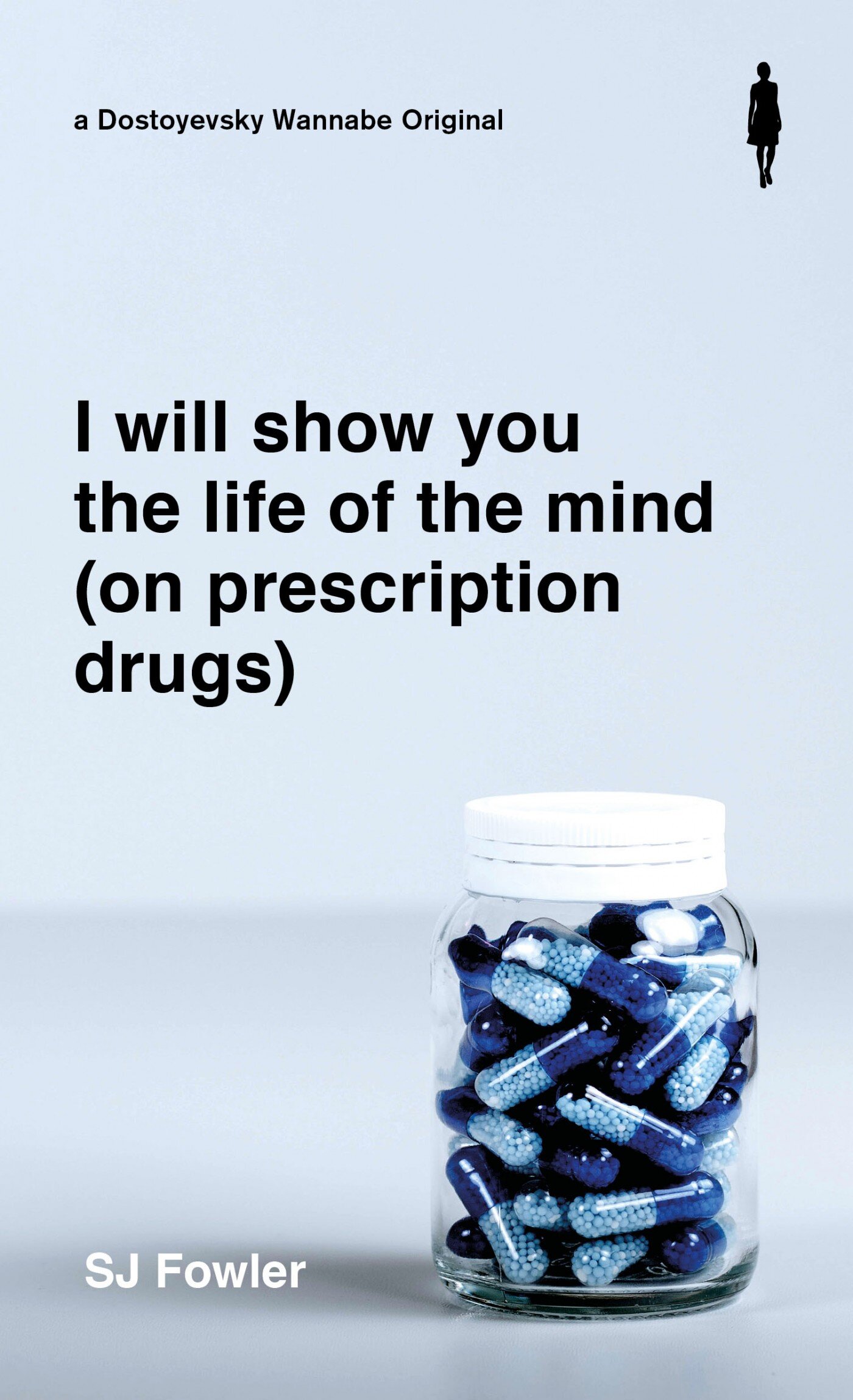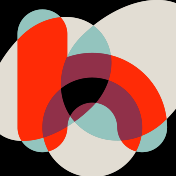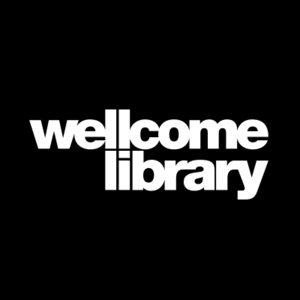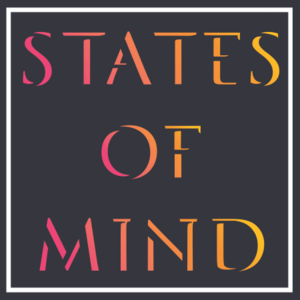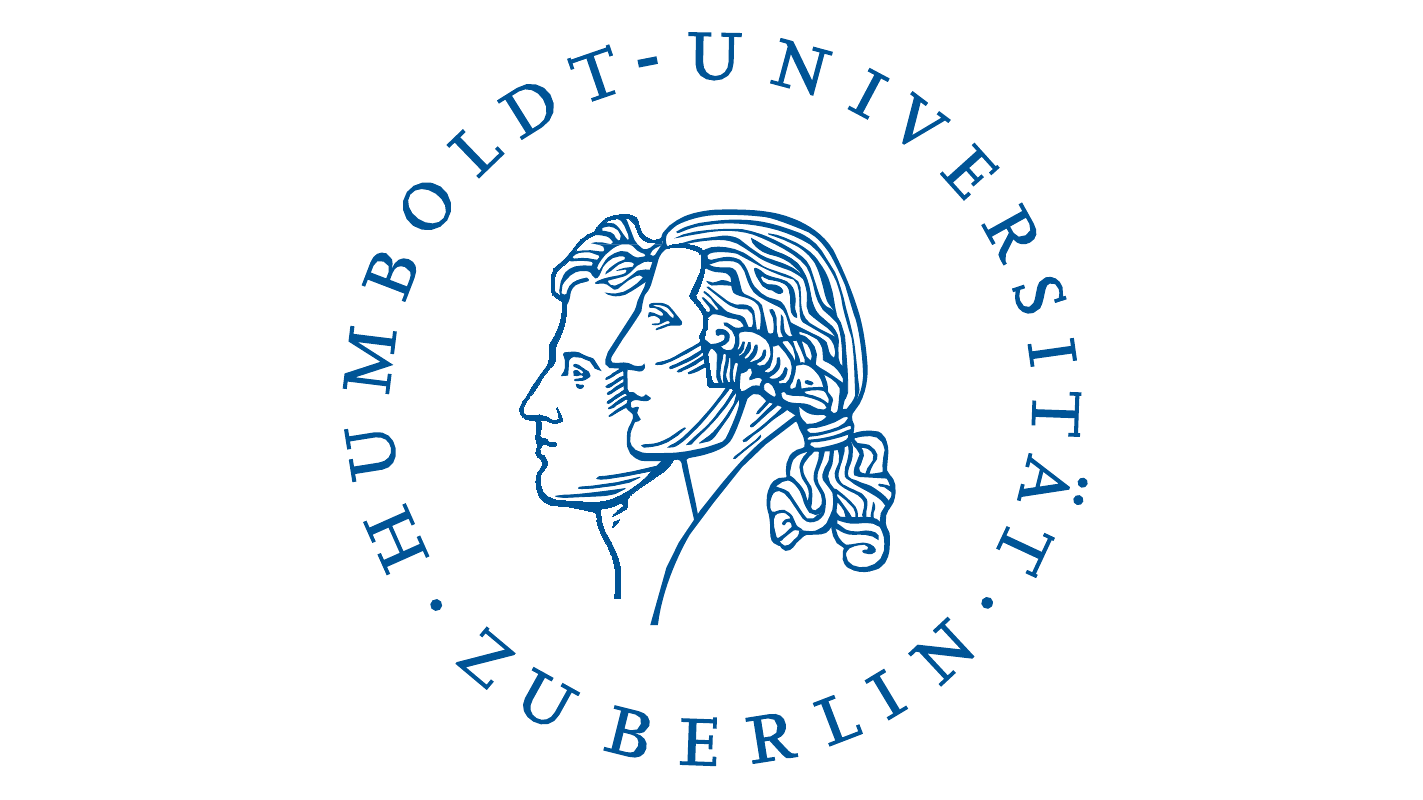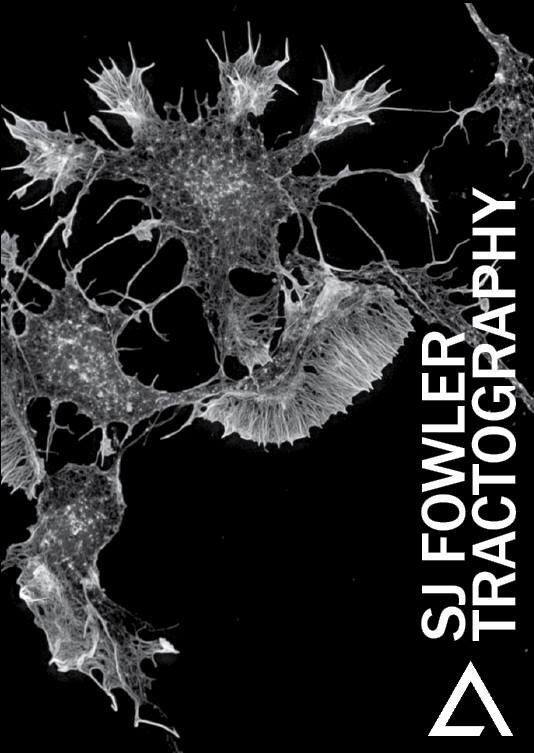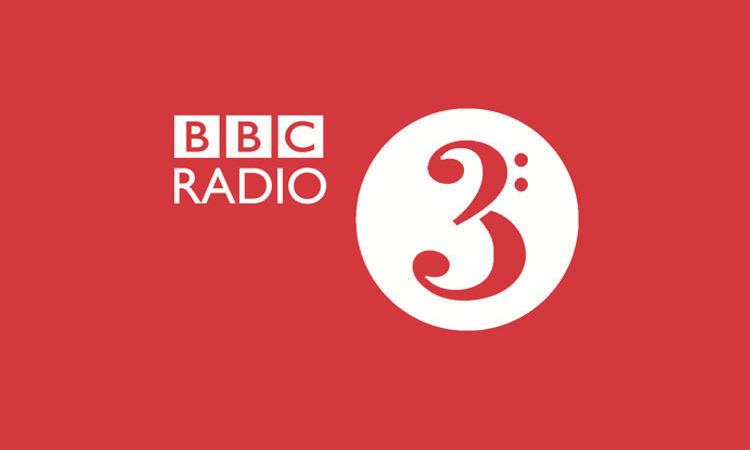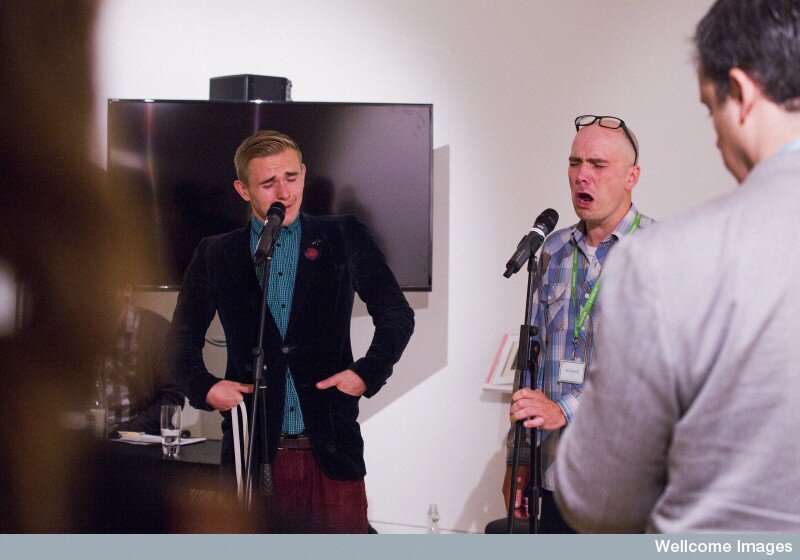Neuropoetics
It strikes me that a poetry interested in language should, eventually, following its root, be interested in the human brain. My work in poetry and neuroscience has taken in books, conferences, commissions, residencies and has been asking questions of what poetry might be in light of an ever changing understanding of our organ of consciousness.
Neuroaesthetics is a field of experimental science that aims to combine neurological and psychological research with aesthetics by investigating the perception, production, and response to art in the brain. Neuropoetics, a term I believe I am the first to use, shifts focus to a very specific exploration of language and the brain / mind, alongside a cogent definition of poetry. That is an artform referent to language whose primary aim is not necessarily communication or information.
Practically, this has led me to explore specific writing and teaching techniques, alongside improvisation, listening, sound, states of consciousness, cognitive states and neurodiversity. In my Poem Brut project, for example, I want to ask whether we might ask those with neurological conditions affecting language to write a poetry that escapes traditional notions of poetics, or sense, and is then profound / valid under avant-garde aesthetics. In my book I will show you the life of the mind (on prescription drugs), I want the very narrative concept in the book to embody the fraught disappearance of control, sense and choice that ebbs into those taking anti-depressants as their cognition shifts. In my project A World Without Words, my collaborator Lotje Sodderland and I looked at how building new languages with asemic writing might aid those with aphasia. At the Salzburg Global Seminar I addressed neuroscience researchers interested in aesthetics by highlighting the absence of necessary knowledge around poetry and linguistics which seems apparent in many poets, let alone scientists. Some highlights of my neuropoetic work includes:
I was a (small) part of the first ever Wellcome Trust Hub award residency
My project Poem Brut
I am a Salzburg Global Fellow
Collaborated with film-maker Noah Hutton
I curated States of Mind
My 2020 conceptual poetry collection - I will show you the life of the mind (On prescription Drugs)
A World Without Words
Commissioned by BBC Radio
Humboldt School of Mind and Brain Berlin.
Soundings with Wellcome Library
A quick note on definition
Neuropoetics, like neuroaesthetics in general, is concerned with the human brain and the concept of mind, and its relation to poetic literature. All three terms have qualitative rather than quantitative definitions. So we must begin from shaky footing in both areas of aesthetics and science. I have found, concretely, that because of this, there has been errors on the aesthetic side, poetry and literature often being discussed and explored with neuroscience by neuroscientists without expertise or experience in the field of literature. In a sense, my formulation of neuropoetics is an attempt to make the case against complete relativity. We can say what makes a poem, just without absolutes. We can say why one poem might be better than another, just again, without quantitative certainty. The absence of such surety should not remove the necessity of such architecture of thought, most especially when we then are thinking about what the brain is doing when reading, writing, experiencing poetry. And we must explore, in a time when the human brain is changing so rapidly to its environment, and when the science of the brain is pushing past such remarkable frontiers of understanding, what the consequences are for the language arts when we discuss mind / brain in language, and arguably rely upon language to construct or express the very essence of reflexive existence.
Neuropoetics, like neuroaesthetics in general, is concerned with the human brain and the concept of mind, and its relation to poetic literature. It must begin from shaky footing in both areas, but I have found, concretely, that latter, when discussed and explored, is very often done so by those without expertise or experience in the field. I have tried, in all my projects in this area of exploration, to make the case against complete relativity. We can say what makes a poem, just without absolutes. We can say why one poem might be better than another, just again, without quantitative certainty. The absence of such surety should not remove the necessity of such architecture of thought, most especially when we then are thinking about what the brain is doing when reading, writing, experiencing poetry.
Practically, this has led me to explore improvisation, listening, sound, states of consciousness, cognitive states and neurodiversity. It has simply led me to more questions in my writing and curating. It has led me into the company of some extraordinary experts in the field of neuroscience and psychology, from Daniel Margulies to Arne Dietrich, from Srivas Chennu to Joseph Devlin.
I thought my presence in this field silly initially (still do really) but at one conference on neuroaesthetics I heard of a study, extremely well funded, where a team of neuroscientists endeavoured to put a group of ‘poets’ in an MRI machine to examine brain activity as they wrote and draw conclusions from this. When I asked what kind of poetry they wrote, interested in the role of say, narrative, in their poetics, I was met with an answer which made me realise it might be worth my time discussing my ideas. They told they wrote ‘good’ poetry.
I am not at all interested in quantified view of poetry and art, just fundamental attempts at definitions (which is powerfully different, the latter suggesting in its auspices an inevitable failure), but I am interested in the link between specific brain areas and poetic activity. This can be applied both to the ability to create and interpret literature. A common approach to uncover the neural mechanisms is through the study of individuals, specifically artists, with neural disorders such as savant syndrome or some form of traumatic injury. The analysis of art created by these patients provides valuable insights to the brain areas responsible for capturing the essence of art.
in the idea that that pleasing sensations are derived from the repeated activation of neurons due to primitive visual stimuli such as horizontal and vertical lines. In addition to the generation of theories to explain this, such as Ramachandran's set of laws, it is important to use neuroscience to determine and understand the neurological mechanisms involved.
The link between specific brain areas and artistic activity is of great importance to the field of neuroesthetics.[9] This can be applied both to the ability to create and interpret art. A common approach to uncover the neural mechanisms is through the study of individuals, specifically artists, with neural disorders such as savant syndrome or some form of traumatic injury. The analysis of art created by these patients provides valuable insights to the brain areas responsible for capturing the essence of art.
The aesthetic enjoyment of individuals can be investigated using brain imaging experiments. When subjects are confronted with images of a particular level of aesthetics, the specific brain areas that are activated can be identified. It is argued that the sense of beauty and aesthetic judgment presupposes a change in the activation of the brain's reward system.[9]
A crucial aspect of research lies in whether aesthetic judgment can be thought of as a bottom-up process driven by neural primitives or as a top-down process with high level cognition. Neurologists have had success researching primitives. However, there is a need to define higher level abstract philosophical concepts objectively with neural correlates. It is suggested that aesthetic experience is a function of the interaction between top-down, intentional orientation of attention and the bottom-up perceptual facilitation of image construction.[10] In other words, because untrained persons automatically apply the object-identification habit to viewing artworks, top-down control to reduce this habit may be necessary to engage aesthetic perception. This suggests that artists would show different levels of activation than non-artists.
Aesthetic responses to different types of art and techniques has recently been explored. Cubism is the most radical departure from Western forms of art, with the proposed purpose of forcing the viewer to discover less unstable elements of the object to be represented. It eliminates interferences such as lighting and perspective angle to capture objects as they really are. This may be compared to how the brain maintains an object's identity despite varying conditions.[11] Modern, representational, and impressionistic art has also been studied for the purpose of explaining visual processing systems. Yet aesthetic judgments exists in all domains, not just art.
Neurocan
The Neurocantos are a sequence of poems, of varying methodologies, relating to neuroscience and the human brain. The poems have emerged from my attendance at the Salzburg Global Seminar on Neuroscience and Creativity, my time in residency with the Hubbub Group at Wellcome collection, and my co-curation of the A World Without Words project, exploring aphasia and the human brain, with Lotje Sodderland and Thomas Duggan, all in 2015.
The Neurocantos have taken on multiple forms, not just in publication of the texts, but in exhibitions, performances, soundscapes, video installations, most often in collaboration. The Neurocantos, often led by found text writing methodologies, owes itself to inspiration provided by collaborators in both science and art, like Noah Hutton, Daniel Margulies and Rebecca Kamen, amongst many others.
Poems from The Neurocantos have been presented at Humboldt University School of Mind and Brain, Berlin and the National Institute of Health, Maryland. They have also been exhibited at the Greater Reston Arts Centre, Virginia and the Janelia Research Institute, Washington, DC
Continuum and the Neurocantos with Rebecca Kamen
After a lengthy and extraordinary correspondence with the artist Rebecca Kamen, who I met at the Salzburg Global Seminar, the impetus for the original Neurocantos poems began by remixing her remarkable expressions and texts around the descriptions and inspirations for her remarkable sculptural artworks and installations.
You can read more about the Continuum exhibition here http://restonarts.org/exhibition/rebecca-kamen-continuum-2/ The exhibition runs from December 1st 2015 to February 13th 2016.
The exhibition will also be shown at the gallery at Janelia Research Institute (https://www.janelia.org) in the Washington, DC area next fall.
As part of continuum, two editions of prints of the Neurocantos are included in the exhibition program, framed for display. Alongside the exhibition's primary sculptural elements, there is also a soundscape, created by Susan which involves my reading from the text and a series of 3 moving poem fragments as video projections from 2 of the Neurocantos poems alongside a Cajal quote.
The NeuroCantos has also been part of Rebecca's presentation at an international neuroscience symposium, honoring the legacy of Santiago Ramon y Cajal at National Institute of Health on November 4th 2015.
The poems have been formed into images... Lobe and a second scan for a print titled, Points of Light. The overlapping circle forms in Points of Light represent the Vesicas Pisces, a symbol of creation, representing in geometry, the birth of a line. It seems quite metaphorical on many levels including “line” in relationship to the concept of proses.
Tractography published by Pyramid Editions - February 2016
Neurocantos at Humboldt University, School of Mind and Brain, Berlin
WELLCOME COLLECTION : HUB AWARD
I was part of the first ever Hub residency at Wellcome Collection. The Hub Award is a funded residency that resides in the fifth floor of the Wellcome building lasting for two years with a seven figure budget. The award goes to a transdisciplinary research group that brings together people from different backgrounds such as academia, health and the arts.
I was part of the Hubbub group, exploring the notion of rest and restfulness against a backdrop of neuroscientists, broadcasters, historians, psychologists and artists in location at Wellcome Collection. The Hub is designed to allow genuinely interdisciplinary practise and collaboration over two full years which explores the cultural and social contexts of health.
I created multiple projects and programmes in the two years, 2014 to 2016, including co-curating part of Wellcome Late, Respites : a series of workshops for people on jobseekers allowance with neurodiverse conditions, participating in the Being Human Festival, alongside new texts, performances, collaborations and workshops.
http://hubbubgroup.org / http://www.stevenjfowler.com/hubbub
I WILL SHOW YOU THE LIFE OF THE MIND (on prescription drugs) – a book from Dostoyevsky wannabe
2020 will see the publication of new book of poetry and fiction on the subject of neuropoetics, bringing together commissions (from BBC, Wellcome Collection et al) alongside previously published pamphlets and new material.
The book aims to explore the ways modern existence has affected the brain, specifically attention spans, neurodiversity and ubiquitous use of prescription drugs, especially on young people, like students. I want to present a poetry of these changes, rooted in a poetics that engages with what we might deem to be both external and internal language, and acknowledges the page as a very specific context for our understanding of poetry.
Dostoyevsky Wannabe is one of the UK’s most dynamic avant garde and literary publishers, based in Manchester.
States of mind : poetry and consciousness FOR WELLCOME COLLECTION
I was invited to speak at and then curate three events in July 2016 for the exhibition at Wellcome Collection on consciousness, States of Mind. These events brought together expertise from a wide array of fields, from neuroscience to performance art, from philosophy to filmmaking, in order to explore the notion of consciousness through the concepts of language, sound and narrative. They were curated to be complimentary in their differences and to evidence the complexity of ideas and approaches surrounding any valuable insight into the question of consciousness.
All three events were remarkable, playing to sold out audiences. Through informal academic talks alongside newly commissioned artworks, the brilliance of the speakers, and the variance of their disciplines, and the cohesion of the overall program, through its carefully orchestrated ambiguity, https://wellcomecollection.org/exhibitions/states-mind-tracing-edges-consciousness
My talk on neuropoetics at Wellcome https://www.youtube.com/watch?v=5DhzB-RafGI
SALZBURG GLOBAL FELLOW
Salzburg Global Seminar: The Neuroscience of Art - what are the sources of Creativity & Innovation? February 2015
I was invited to participate in a week long conference exploring neuroscience & the origins of creativity, to represent neuropoetics, and be the ‘specialist in literature and the brain.
The organisation, based in the Schloss Leopoldskron was founded in 1947 to bring together intellectuals and politicians and is one of the world’s foremost thinktanks. http://www.salzburgglobal.org/about-us/mission/our-mission.html
I presented on the possibilities of literature and neuroscience, and the endless questions, definitions, experiments and consequences which might arise from their necessary and inevitable intersection, as the latter evolves into increasing prominence and viability, and the former, in the hands of the contemporary, attempts to keeps pace with actual 21st century life and language. The ambition of these basic terms, outlined here, perhaps give clue to the nature of the week, in the sense that the questions were not really resolvable, but the human connections and expressions of expertise were being brought together to begin relationships which might take on their own exponential character.
A Neuro Retro Spectro Scopic View: lecturing at Humboldt University, school of Mind & Brain, Berlin
I was invited in October 2015 to lecture at Humboldt University Berlin for a series of public events and student lectures on the subject of neuropoetics, neuroscience and the study of literature, mind and language and avant garde poetry, and its history, including the affect of neurodiverse conditions on writing.
The project – Neuro Retro Spectro Scopic View - brought together a series of curators, artists and writers interested in neuropoetics and neuroaesthetics, including Mriganka Madhukaillya, Elena Agudio and Daniel Margulies, neuroscientist and head of the Max Planck institute.
BBC Radio 3 commission
The Worm in its Core soundcloud.com/sjfowler/theworminitscore
I was commissioned to write and perform a new poem / monologue by Radio 3's The Verb, hosted by Ian McMillan, for broadcast on January 15th 2016, in response to Hearing the Voice - a project which explores, and demystifies auditory verbal hallucinations.
The poem aims to evoke both internal and external language and the multiplicity of self-perception in the mind. www.stevenjfowler.com/theverb
A world without words
was an Arts Council England funded project bringing together the most dynamic genre pioneers in neuroscience and sensory aesthetics, exploring the nature of human language and the brain, through a collaborative program of exhibitions, interactive events, and screenings in bespoke venues across London. It was curated by myself and material engineer Thomas Duggan, of the medialab at MIT and Lotje Sodderland, filmmaker and subject of Netflix’s remarkable ‘My Beautiful Broken Brain’ documentary.
The project partnered with Somerset House, the Frontline Club, Apiary Studios and the Hardy Tree Gallery and commissioned over 30 speakers from a multitude of fields to each share their expertise on the potentialities of human language, the human brain and the emerging field of neuropoetics. Speakers included Conrad Wolfram, Daniel Margulies, Rupert Sheldrake, Barry Smith, Vincent Moon and Nick Ryan. It ran 2014 to 2016.
Soundings with WELLCOME LIBRARY
Soundings was a series of collaborative sound poetry and sonic art performances held in seven different venues in the city of London. Each edition of Soundings began with Wellcome librarians suggesting images, manuscripts and books from the Library’s collections in response to a title initiated by Wellcome curators. These sources formed the basis of a theme in each of the collaborative public performances.
Soundings was documented by filmmaker Ed Prosser, and a selection of these videos were exhibited at an exhibition at The Mile End Art Pavilion in 2016. http://www.stevenjfowler.com/soundings
Neurocantos for continuum exhibition
A commission to create poems as sculptural artworks and installations for a group exhibition entitled Continuum which was exhibited at the Janelia Research Institute (https://www.janelia.org) in Washington, DC and the Greater Reston Arts Centre in Virginia, USA.
The Neurocantos grew out of a collaboration with scientist and artist Rebecca Kamen, one of the world’s foremost neuroaesthetic practitioners.
Enthusiasm : a film with noah hutton
A short film, a transatlantic cinematic collaboration, Enthusiasm draws on new techniques in analyzing internal monologues and self-consciousness used by contemporary neuroscientists. Utilising the possibilities of cinema to reveal the conflicts of inner and outer narrative, how our internal and external languages collide, the film features improvised and acted scenes alongside voiceover techniques, to juxtapose that which is said and that which is thought.
The film is available https://www.dropbox.com/s/434x97lw8xtove5/Enthusiasm.mp4?dl=0
Noah Hutton has presented work at the Venice Biennale and Society for Neuroscience, In 2015 he created Brain City, a multi-platform installation in Times Square. He is in the final year of work on a ten-year documentary begun in 2009 and currently supported by a grant from the Alfred P. Sloan Foundation about the quest to simulate the human brain on supercomputers, focusing on the Blue Brain Project based in Geneva, Switzerland.
